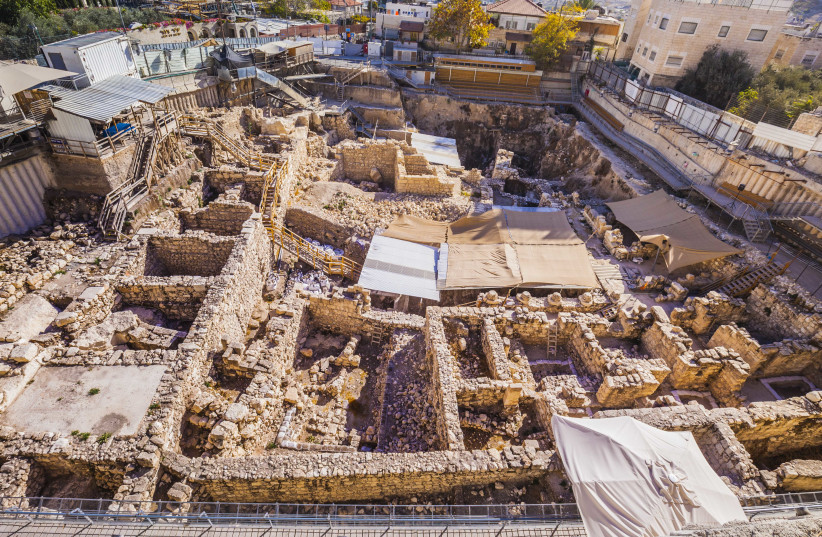Israeli archaeologists were stumped after discovering two 2,800-year-old channel installations dating back to the First Temple that were probably used for some sort of production, the Israeli Antiquities Authority announced on Wednesday.
The channel installations, which were found in digs by the IAA, Tel Aviv University, and the City of David, may be part of a larger industrial system, archaeologists said. While they assume they were used for soaking some product or other, even Israel Police couldn't figure out what using its forensic investigative unit.
Whatever was produced in this facility was probably important for the Judean kingdom's economy as it was found close to where the Temple and the king's palace had been.
The newly discovered canal system is truly unique
"We looked at the installation and realized that we had stumbled on something unique, but since we had never seen a structure like this in Israel, we didn't know how to interpret it," said IAA researcher Dr. Iftach Shalev. "Even its date was unclear. We brought a number of experts to the site to see if there were any residues in the soil or rock that are not visible to the naked eye, and to help us understand what flowed or stood in the channels. We wanted to check whether there were any organic remains or traces of blood, so we even recruited the help of the police forensic unit and its research colleagues around the world, but so far – to no avail."
TAU's Prof. Yuval Gadot said that the mystery only deepened when they found the second canal system.

"This installation consists of at least five channels that transport liquids," he said. “Despite some differences in the way the channels were hewn and designed, it is evident that the second installation is very similar to the first,"
"This is a period in which we know that Jerusalem spread over an area that included the City of David and the Temple Mount which served as the heart of the city."
Prof. Yuval Gadot
The second system's discovery did, however, help the archaeologists determine that the facility went out of use sometime toward the end of the ninth century BCE.
“This is an era when we know that Jerusalem covered an area that included the City of David and the Temple Mount, which served as the heart of Jerusalem," said Gadot. "The central location of the channels near the city’s most prominent areas indicates that the product made using them was connected to the economy of the Temple or Palace. One should note that ritual activity includes bringing agricultural animal and plant produce to the Temple; Many times, Temple visitors would bring back products that carried the sanctity of the place."
